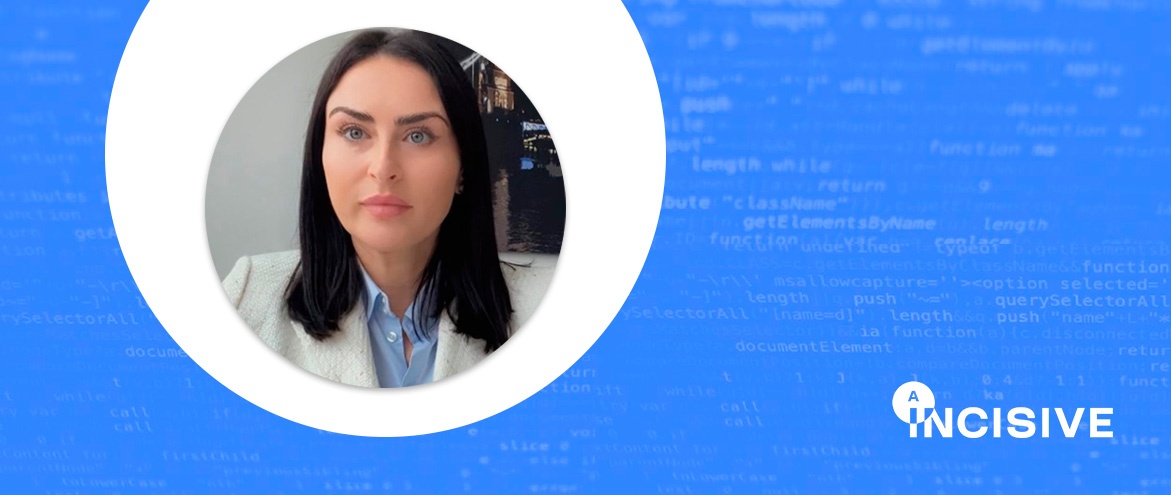“It is important to understand user behaviours, needs and motivations, so we can incorporate their vision”
Published on 26/07/2022
Interview with Oana Bunduc, INCISIVE’s partner from Telesto IoT Solutions, who is leading the User Requirements Definition and System Design work package (WP2).
Why is it crucial for the project to understand the user’s needs?
It is important to understand user behaviours, needs and motivations, so we can incorporate their vision within the INCISIVE platform, in order to give reliable and verifiable information about people’s experiences when using the INCISIVE platform.
We are genuinely interested in offering to the end users what they need. The end user’s needs provide structure to project planning and delivery, as we have a clearer idea of what we need to achieve to ensure success. It also helps us create a better targeted product and most importantly, improves efficiency and prevents taxpayers’ money being spent on digital services that don’t get adopted.
“The users’ needs were investigated through observation techniques, task analysis, online surveys, workshops and other feedback methodologies”
Which consultation activities have you carried out and are still expected to investigate the user’s needs, perceptions and experiences?
The users’ needs were investigated through observation techniques, task analysis, online surveys, workshops and other feedback methodologies.
Throughout the INCISIVE project, we organised a comprehensive series of surveys and interviews to analyse the existing pathway and map the healthcare professional journey regarding cancer diagnosis and follow-ups, identifying the gaps and rooms for improvement and analysing the users’ experiences and concerns.
With the use of a questionnaire, we captured the healthcare professionals’ reflections on the dimensions mentioned above. The quantitative data was analysed using descriptive statistics. Moreover, semi-structured interviews were conducted and analysed using inductive and deductive reasoning.
What tasks are you performing to define the overall INCISIVE architecture and design the main components?
We have conducted several workshops with representatives from different disciplines within consortium in order to suggest solutions to complex problems extracted from the user needs assessment.
In particular, translating the user requirements into system specifications (functional and non-functional) by covering the whole system from the data acquisition and analysis to the services and support for users.
Based on this, the overall architecture has been defined on a high level, with the subsystems of INCISIVE and their interconnections, creating a highly modular platform.
What has been your contribution to the first prototype?
The overall WP2 activities have been the reference framework for the first prototype release. It provided the structure to project planning and delivery and brought a clearer idea of what was expected to be implemented for a successful 1st prototype. As work-package 2 leader, my efforts were focused on coordinating the various tasks and ensuring the partners were aligned on the bigger picture. We kept a rigorous pace as our activities and outputs were the start of the project’s critical path. So my job was to guarantee the timely delivery of the requirements and architecture so that the rest of the project activities could be carried out with no delays or scope deviations.
What are your next steps?
Organise workshops with the end-users and important stakeholders of the INCISIVE platform to extract feedback on the 1st prototype.
The feedback will be integrated into the next and final release of the INCISIVE platform and an implementation plan will be created to ensure INCISIVE project success.
“Being part of this endeavour is a unique experience for me, while working with the world-class researchers of INCISIVE is a real inspiration”
Finally, can you tell me what your personal experience is working with the consortium?
INCISIVE provides an excellent opportunity to see the application of AI in real-world scenarios addressing some of humanity’s greatest health challenges, such as the early diagnosis of cancer. Being part of this endeavour is a unique experience for me, while working with the world-class researchers of INCISIVE is a real inspiration.
It has provided me with valuable experience in terms of honing my project management skills as well as an in-depth understanding of modern healthcare challenges and how AI can help us address them.








